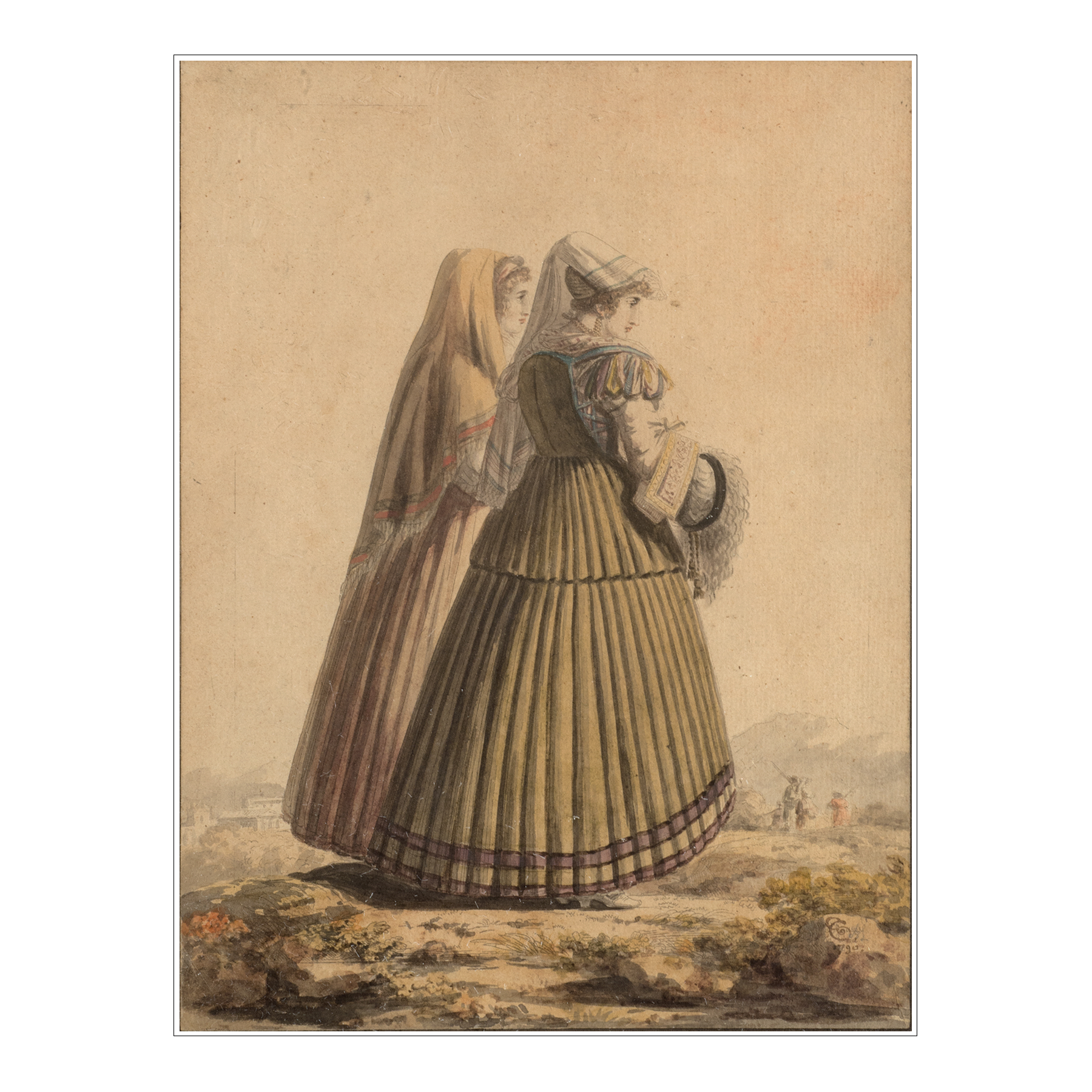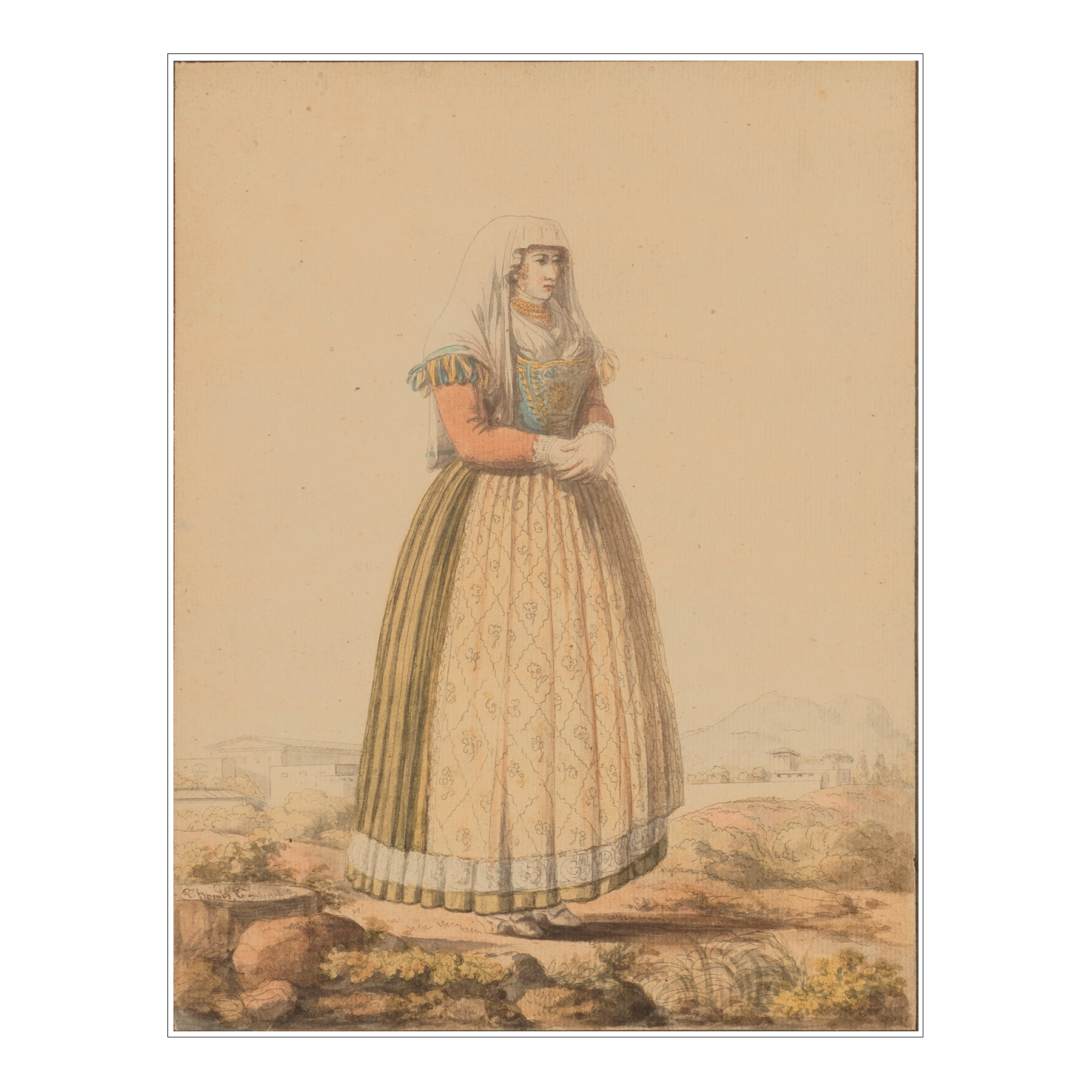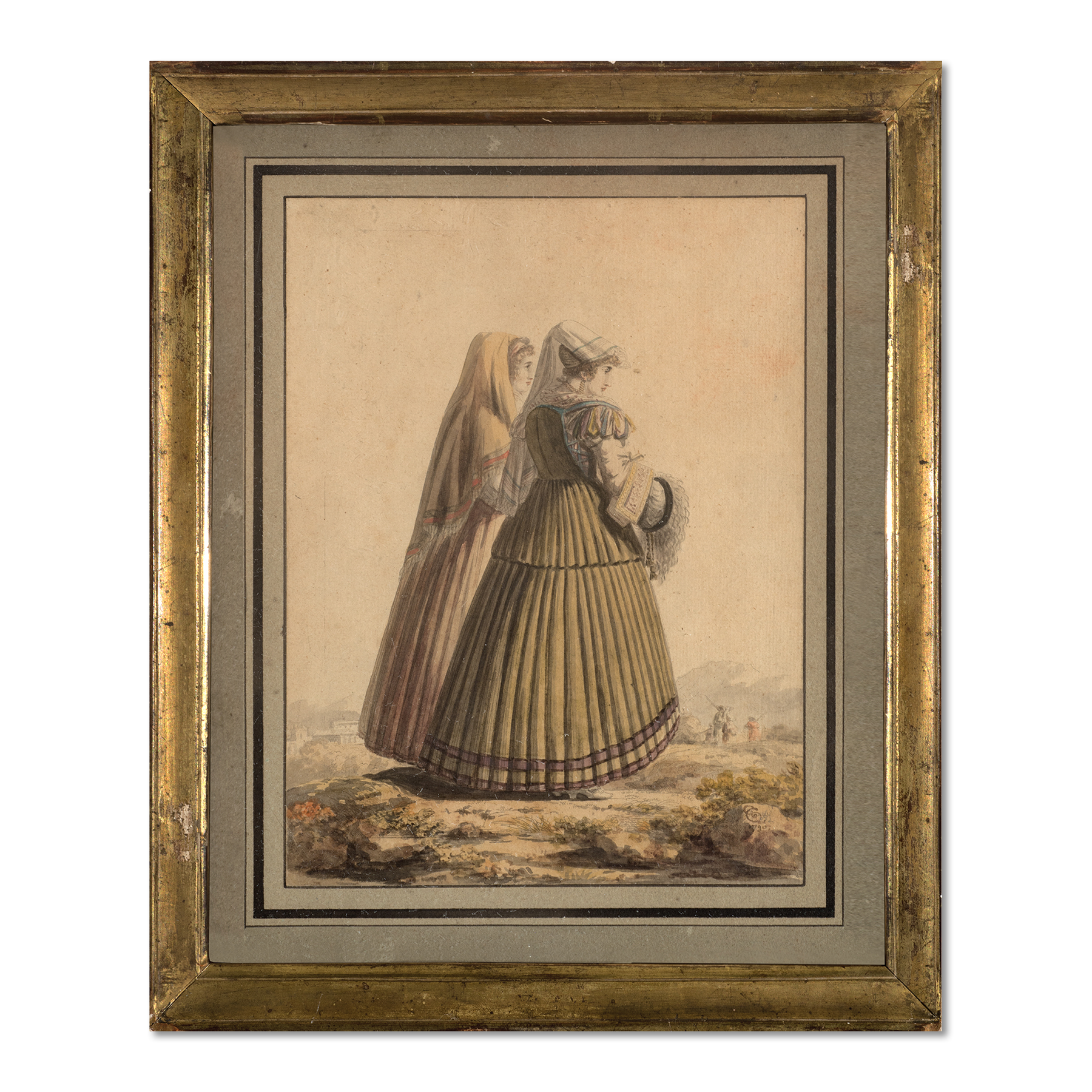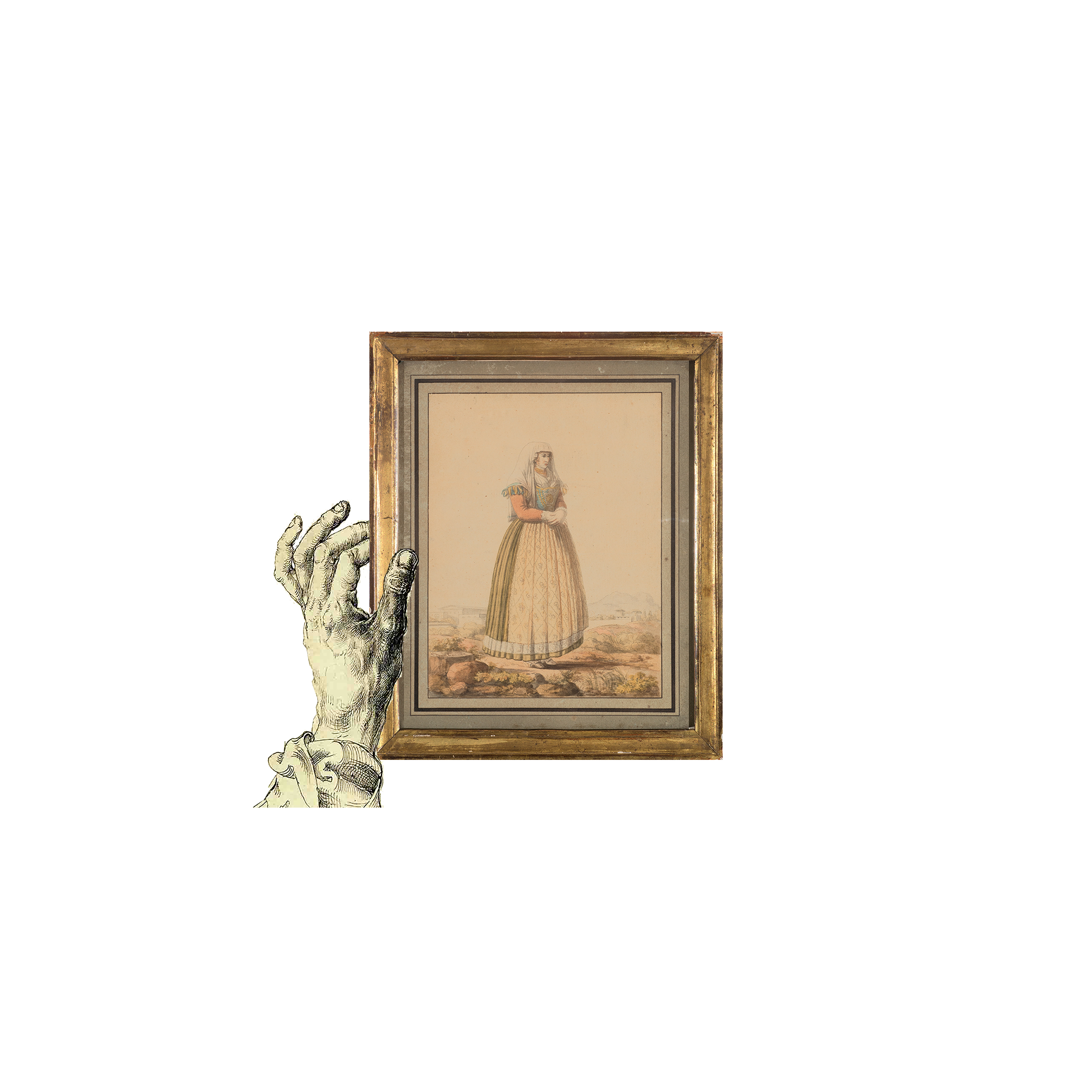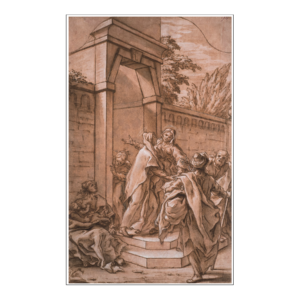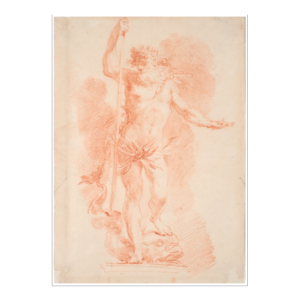Jean-François Thomas de Thomon
Paris 1759 – Saint-Pétersbourg 1813
Study of a Roman Lady (1); Study of Two Roman Ladies (2), a pair
Watercolour over etched outlines.
Early 20th century mount and framing (unopened).
- Signed over the etched signature Thomas T. 218 x 166 mm – 8 9/16 x 6 1/16 in. Four minor bulges higher left.
- Monogramed and dated TT 1790 with pen and ink over etched signature Thomas à Rome 216 x 164 mm – 8 ½ x 6 7/16 in.
A French neoclassical architect, Thomas de Thomon was the pupil of Julien David le Roy, in whose classes he rubbed shoulders with Charles Percier and Pierre François Leonard Fontaine. Although he failed to win the Academy grand prize, he went to Rome at his own expenses in 1785. There, he was able to take the classes of the French Academy in Rome, and benefited from the support of its director François Guillaume Ménageot and eminent personalities such as the Cardinal de Bernis. In both his articles on the artist (« Un architecte français en Russie à l’aube du XIXe siècle », Revue des études slaves, t. LVII, fasc. 4, 1985, and « Formation artistique et première étape de la carrière de l’architecte Jean-François Thomas, dit de Thomon », Bulletin de la Société de l’histoire de l’art français, année 1986, Paris 1988), Boris Lossky invalidated the idea, spread by Thomas de Thomon himself and often repeated in his biographies, that he went back to Paris in 1789 and worked for the Comte d’Artois before before fleeing the Revolution.
Still mentioned in Rome in July 1789 in Ménageot’s letters, Thomas de Thomon seems to have rather emigrated directly from Rome, passing by Venice, then Austria and Poland, before settling permanently in Russia. There, he designed and built the Old Saint Petersburg Stock Exchange and Rostral Columns, and the Odessa Theatre (destroyed in 1873), among other things. The present drawing, signed, dated and located Thomas a Rome 1790, confirms that Thomas de Thomon was still in Rome in 1790, at least at the beginning of the year.
The technique of watercolor over etched outlines enabled the artist to edit series of works following the same model, but always different thanks to the watercolour. These works were meant to be sold to tourists and amateurs as souvenirs. This technique was frequently used at the end of the 18th century by landscape or vedute artists such as Louis Jean Desprès and particularly Louis François Cassas, who happened to be in Rome at the same time as Thomas de Thomon and was also in contact with the Cardinal de Bernis.
